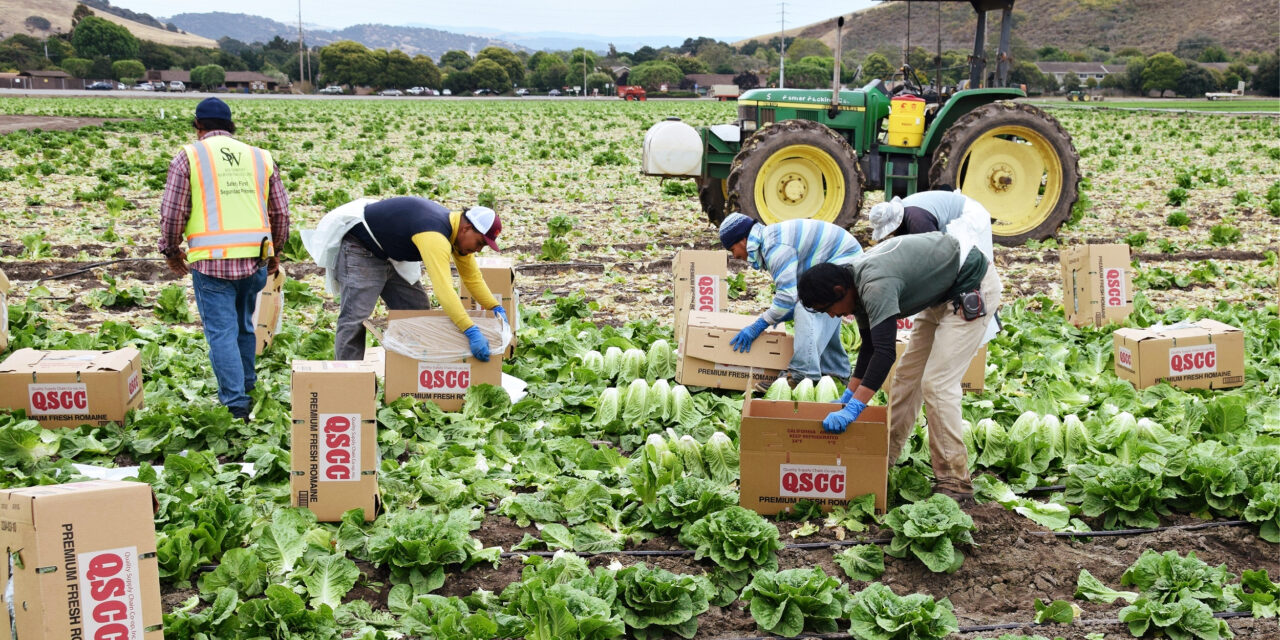The dangers to America’s farmworkers—primarily immigrant men from Mexico with temporary H-2A visas—have long persisted under a system that is ripe for abuse. But those risks have only grown since the coronavirus pandemic erupted in the United States this March.
A lack of workplace protections, crowded housing, and no social safety net put farmworkers at heightened risk of contracting and spreading COVID-19. The Trump administration nevertheless deemed farmworkers “essential” early in the pandemic, expanding the H-2A visa program while slashing others.
This has come at a high cost. New research shows that transmission of the virus is two and a half times more likely in a farmworker household than in the average U.S. household. Communities with a high share of farmworkers may be four to five times more likely to experience greater rates of infection, faster spread, and recurring hotspots.
A variety of factors contribute to farmworkers’ increased risk.
Farmers Rely on Third-Party Contractors to Hire Farmworkers
H-2A farmworkers often get recruited to work in the United States by labor contractors. It’s become common for farmers to outsource much of the recruiting, hiring, transporting, and housing to these contractors. This system can reduce a farmer’s liability in the event the farm faces any legal troubles.
15% percent of all farmworkers get hired to work in the United States through these intermediaries. Federal data shows that contractors are twice as likely to get barred from the H-2A program for labor violations than other employers hiring for the program.
One of the major issues is a lack of oversight. Farms run primarily through contractors tend to have fewer on-site state or federal inspections. Consequently, the farms’ COVID-specific workplace safety plans may not get assessed or even have a baseline for criteria.
Farmworkers Often Live in Large, Crowded Households
Due to limited affordable housing and low pay, the average farmworker household has at least five people living in it. That is 90% higher than the average U.S. home. Naturally, this increases the risk for spreading COVID-19 among all members of the household.
The conditions in which farmworkers are often forced to live don’t help the situation.
An investigation by NBC News found deplorable conditions in over a dozen H-2A sites throughout North Carolina and Georgia in November 2019.
Reporters found “government-approved farmworker housing overrun with insects and spiders’ nests, as well as cardboard covering broken windows. A dilapidated trailer in Georgia had gaping holes in the walls; feral cats had crawled into the kitchen cabinet …”
These conditions, combined with limited to no access to healthcare services, increase the risk of both contracting and spreading the virus.
Exclusion from the CARES Act
The Trump administration excluded mixed-status families and undocumented people from receiving benefits under the Coronavirus Aid, Relief, and Economic Security (CARES) Act.
The stimulus package failed to expand the eligibility criteria for Medicaid. Millions of immigrants who could have benefited from an expanded version of the Medicaid program continue to be disqualified.
This puts COVID-19 testing and treatment out of reach for many people. This includes vulnerable farmworkers, their families, and communities.
American employers must take the lead in providing safe housing and protections for farmworkers. The United States has a duty to protect all its residents from the virus—including those we depend on for our food supply.
FILED UNDER: covid-19, Farmworkers


